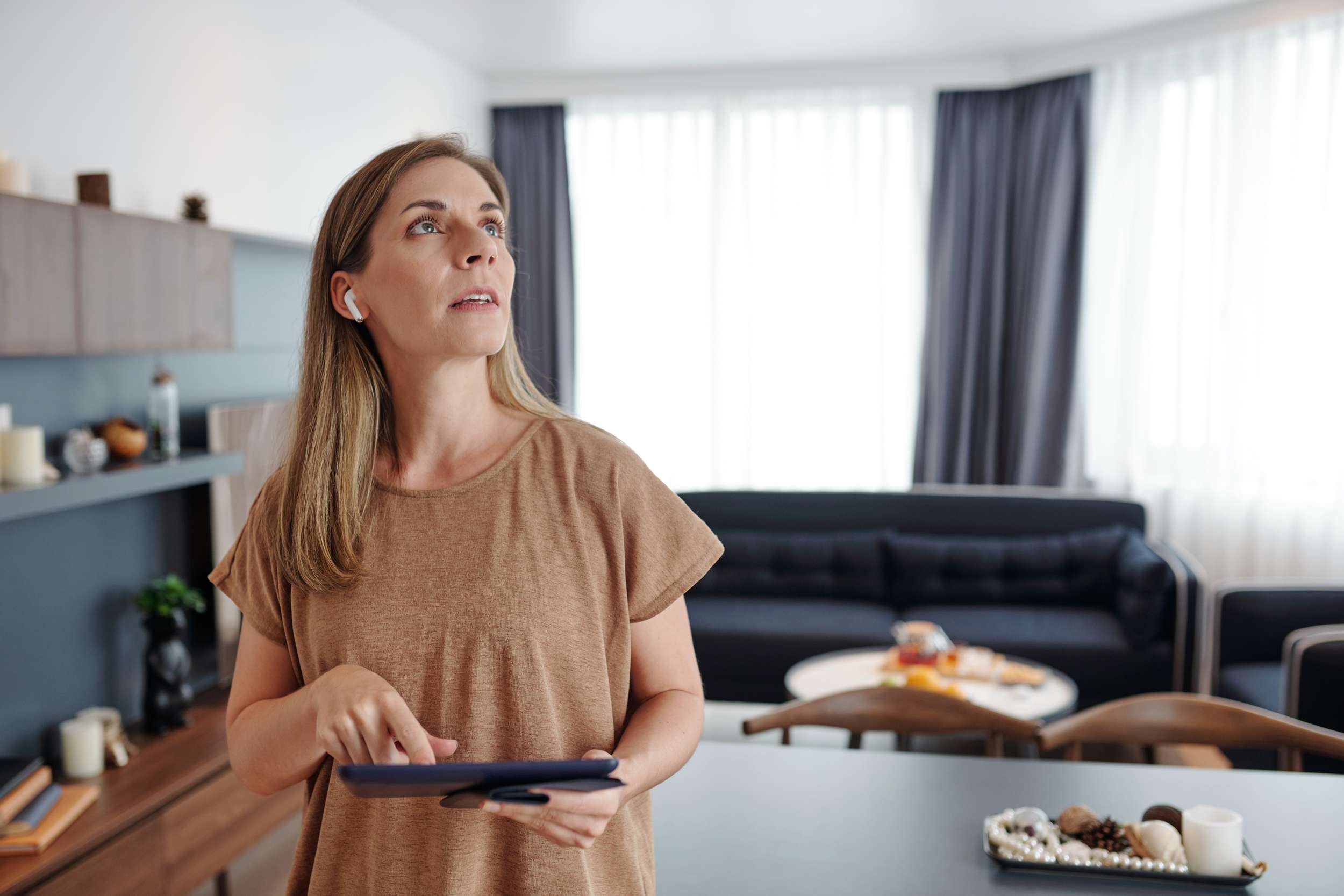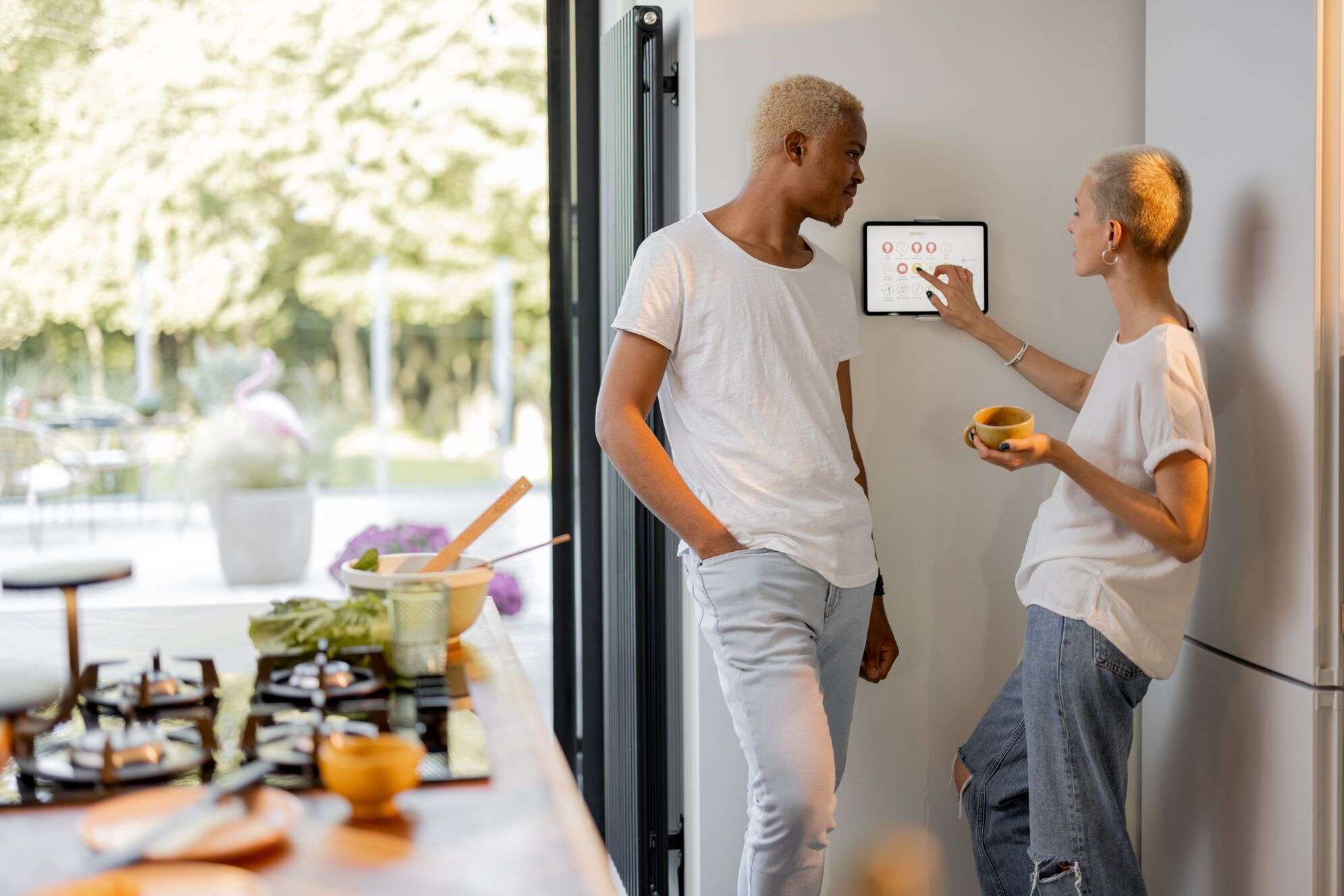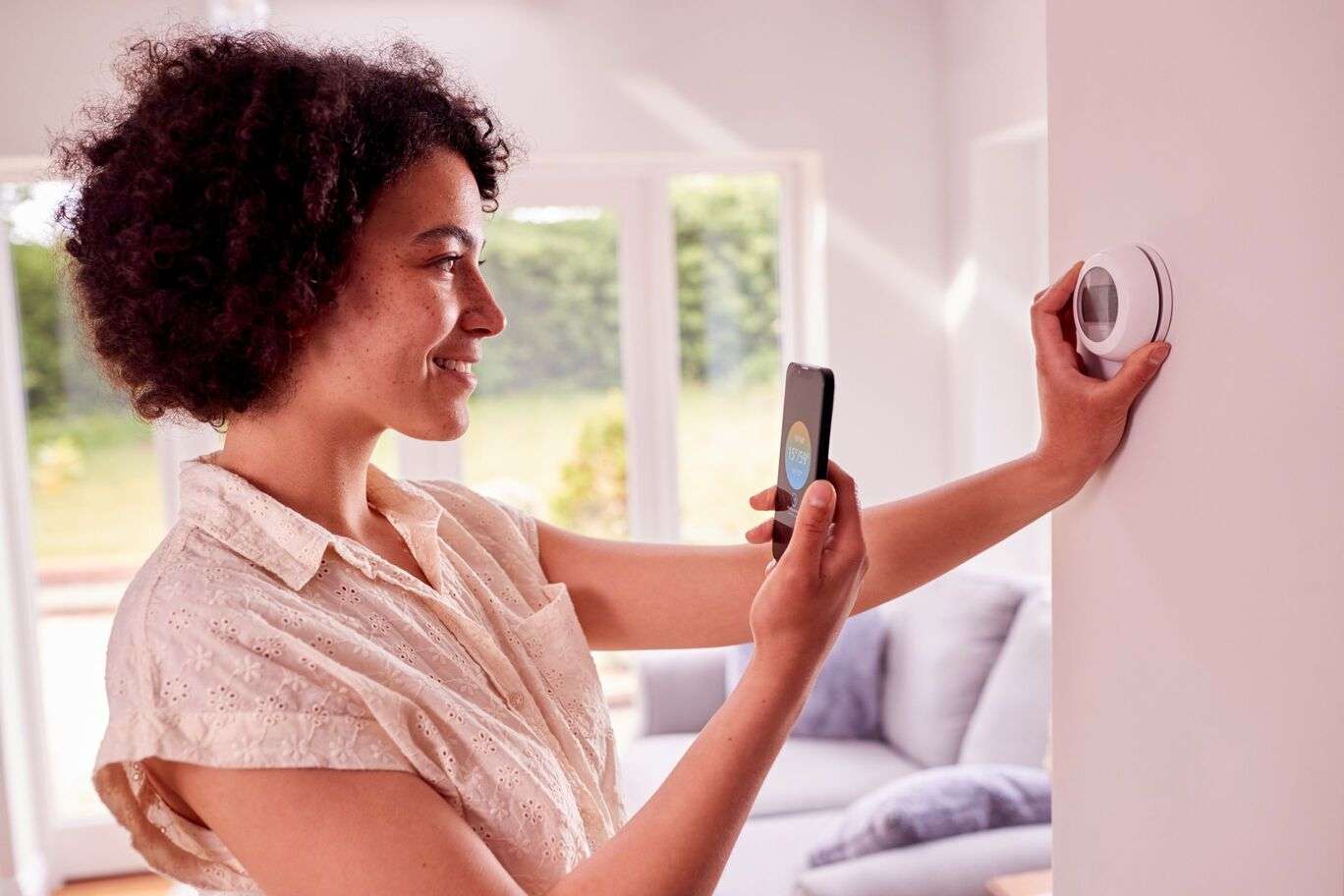In this section, we’ll peel back the curtain on the captivating world of smart homes, where technology dances with everyday life to create an experience that’s seamless, efficient, and effortlessly intuitive. Step into a home that welcomes you with a cozy ambiance as soon as you step through the door. So, how to step into intelligent living with a smart home?
- Assess Your Needs and Goals
- Research and Choose Smart Devices
- Set Up and Connect Devices
- Personalize and Automate
- Learn and Experiment
- Expand Gradually
Assess Your Needs and Goals

Assessing your needs and goals is a crucial first step when stepping into intelligent living with a smart home. This process involves understanding your current lifestyle, identifying areas where smart technology could enhance your daily routines, and setting clear objectives for what you hope to achieve with your smart home setup.
You have to examine how you and your family members go about your daily lives. Are there specific tasks that you find repetitive or time-consuming? For instance, do you often forget to turn off lights when you leave a room? Or maybe you’d like to streamline your morning routine by having your coffee maker start brewing as soon as you wake up. Identifying these pain points and opportunities for improvement can guide your smart home decisions. Think about how smart technology can enhance your comfort and convenience. Would you like to adjust the thermostat from your smartphone before you arrive home? How about setting up a voice command to control your entertainment system without needing multiple remotes? Consider aspects like smart lighting that can be dimmed or changed based on your mood or the time of day.
Smart home devices can contribute to energy savings. Assess how you currently manage energy usage. Would you benefit from a smart thermostat that automatically adjusts temperatures when you’re not home? Are you interested in monitoring the energy consumption of specific appliances to identify potential wastage? You also have to consider your home’s security needs. Are you interested in video doorbells or security cameras to monitor your property? Do you want to be alerted when doors or windows are opened? Assessing your security requirements can guide you toward devices that offer the level of protection you desire.
You need to determine your budget for transitioning to a smart home. Start with the essential devices that align with your top priorities and then plan for potential expansions in the future. A well-planned setup can be built gradually over time as your needs evolve. While smart devices offer convenience, they also gather data about your habits and usage patterns. Assess how much information you’re comfortable sharing and research devices and ecosystems that prioritize your privacy.
Consider where you see your smart home setup in the long run. Are you aiming for a fully integrated and automated home, or are you focused on specific areas like energy efficiency or security? Having a clear vision of your long-term goals will help you make more informed decisions as you build your smart home. If you’re interested in using voice commands or a central hub to control your devices, ensure that the devices you choose are compatible with the ecosystem you plan to use. This will help you avoid frustration down the line when trying to connect and control your devices seamlessly.
By thoroughly assessing these factors, you’ll be better equipped to make informed decisions about which smart devices and technologies align with your needs and goals. Intelligent living through a smart home is about tailoring technology to enhance your life, and this initial assessment will set the foundation for a successful and satisfying smart home experience.
Research and Choose Smart Devices

Researching and choosing the right smart devices is a critical step in your journey toward intelligent living with a smart home. This phase involves exploring the wide array of available smart devices, understanding their features and benefits, and selecting those that align with your needs and goals. You can begin by identifying the essential smart devices that will have the most immediate impact on your daily life. These often include devices like smart lighting, smart thermostats, and smart plugs. Smart lighting allows you to control the brightness and color of your lights remotely, while a smart thermostat helps you regulate your home’s temperature more efficiently. Smart plugs can turn regular appliances into smart ones, enabling remote control and automation.
After choosing the essentials, consider expanding your smart home setup based on your priorities. If security is a concern, you might want to research smart locks, security cameras, and doorbell cameras. For convenience, explore options like smart speakers (Amazon Echo, Google Home) that provide voice control and integration for other devices. Smart blinds, smart appliances, and even robot vacuums are other options to consider based on your preferences. You have to research different brands and manufacturers to find devices that are reliable and reputable. Additionally, ensure that the devices you’re interested in are compatible with the smart home ecosystem you’ve chosen. For example, if you’re planning to use Amazon Alexa as your voice assistant, look for devices that work seamlessly with Alexa. This compatibility ensures a smoother and more integrated experience.
User reviews and recommendations can provide valuable insights into real-world experiences with specific devices. Look for reviews on websites, forums, and social media platforms to learn about the pros and cons of each device. Pay attention to common issues and consider whether you’re willing to work around them. If possible, test out a device before committing to a full setup. Some devices might have trial periods or return policies. This hands-on experience can help you understand how well a device works in your home and whether it truly meets your needs. By conducting thorough research and carefully selecting smart devices that align with your needs and preferences, you’ll lay the foundation for a smart home that enhances your daily life and provides the convenience and efficiency you’re looking for.
Set Up and Connect Devices

Setting up and connecting your smart devices is a pivotal step in creating an intelligent living environment within your smart home. This process involves turning your chosen devices into functional and interconnected components that you can control and monitor remotely. Here’s a comprehensive guide to help you navigate this step:
Gather Necessary Materials
Before you begin, ensure you have all the necessary materials ready, including the smart devices, their manuals, your smartphone or tablet, a stable Wi-Fi network, and any associated tools for installation, if required.
Download the Relevant Apps
Most smart devices come with companion apps that facilitate the setup and control process. Download the apps for each device from the respective app store. These apps will guide you through the setup process and allow you to customize settings later on.
Follow the Manufacturer’s Instructions
Carefully read and follow the manufacturer’s instructions provided in the device manual or app. These instructions will guide you through the initial setup, connecting to your Wi-Fi network, and pairing the device with your smartphone.
Connect to Wi-Fi
Typically, smart devices connect to your home Wi-Fi network. During the setup process, you’ll be prompted to select your network and enter the network password. Make sure your Wi-Fi signal is strong in the area where you plan to install the device to ensure a reliable connection.
Pairing and Syncing
Some devices may require a pairing process to establish a connection between the device and your smartphone or hub. This might involve scanning a QR code, pressing buttons on the device, or following prompts in the app. Once paired, the device should appear in your app’s device list.
Test and Refine
After setup, test each device to ensure it functions as expected. Try out different commands, automation routines, and features to ensure they work according to your preferences. Don’t hesitate to make adjustments to settings as needed.
Personalize and Automate

Personalizing and automating your smart home devices is where the true magic of intelligent living comes to life. This step allows you to tailor your smart home setup to match your unique preferences and routines while also introducing a level of automation that simplifies daily tasks. Once your smart devices are set up, dive into their individual settings to customize them according to your needs. For example, you can adjust the brightness and color of smart lights, set your preferred temperature settings on your smart thermostat, or configure motion sensitivity on security cameras. Make these adjustments to ensure that each device functions exactly the way you want.
Scenes and routines allow you to group multiple smart devices together to perform specific actions with a single command. For instance, you can create a “Good Morning” routine that turns on the lights, adjusts the thermostat, and plays your favorite morning playlist when you say a specific phrase like “Good morning.” This saves you time and effort by automating a series of actions. You can create schedules for your devices based on specific times of the day. For example, you can program your smart lights to turn on gradually in the morning to simulate a natural sunrise or set them to automatically turn off at bedtime. Time-based automation adds predictability to your daily routine.
If you’re using a smart speaker like Amazon Echo or Google Home, take advantage of voice commands to control your devices. Sync your smart devices with your voice assistant and use simple phrases to command them. This integration provides hands-free control and enhances the user experience. As you automate your smart home, be prepared to experiment with different settings and routines. Some automations might work perfectly from the start, while others might need a bit of tweaking to match your preferences. Regularly assess and adjust your automations to ensure they remain effective. This step enhances the efficiency and convenience of your intelligent living setup, ultimately making your daily life more seamless and enjoyable.
Learn and Experiment

Learning and experimenting are essential aspects of transitioning to intelligent living with a smart home. Embracing this phase allows you to fully understand the capabilities of your smart devices, discover new ways to optimize your setup, and adapt your smart home to suit your evolving needs. Take the time to thoroughly explore the features and functionalities of each smart device you’ve incorporated into your home. Refer to the user manuals, online resources, and tutorials provided by the manufacturer. Understanding what each device can do will empower you to make informed decisions about how to integrate them into your routines.
Don’t hesitate to experiment with voice commands, app controls, and automation scenarios. Try different ways to interact with your devices and see which methods suit your preferences best. For instance, explore voice commands that control multiple devices simultaneously or test out various automation sequences to find the most efficient routines. You can also experiment with different automation scenarios to fine-tune your smart home experience. Create new routines and scenes to optimize your daily routines and address specific needs.
Involve your family members in the learning and experimenting phase. Get their feedback on the automation routines and ask for suggestions on how to enhance the smart home setup to cater to everyone’s needs. Their insights can help you create a more inclusive and effective smart home environment. You can also join online forums, social media groups, or local smart home communities to connect with others who are also exploring intelligent living. Learning from their experiences, tips, and insights can provide you with valuable perspectives and inspire new ideas for your own smart home setup.
Approach learning and experimenting with a growth mindset. Understand that some things may not work perfectly on the first try, and that’s okay. Every experiment, success, or challenge is an opportunity to learn and refine your smart home setup. By embracing the learning and experimenting phase, you’ll uncover the full potential of your smart home setup. This step allows you to refine your automations, discover creative solutions to everyday challenges, and create a personalized intelligent living experience that aligns perfectly with your lifestyle and preferences.
Expand Gradually

Expanding gradually is a key principle when stepping into intelligent living with a smart home. While the initial excitement might tempt you to incorporate a multitude of devices all at once, taking a gradual approach allows you to make informed decisions, optimize your setup, and avoid overwhelming yourself. Here’s a comprehensive guide on how to effectively expand your smart home setup over time:
Prioritize Based on Needs
As you consider expanding your smart home, prioritize devices that address your current needs or pain points. Reflect on your experiences with your existing devices and identify areas where additional smart technology could enhance your lifestyle further.
Set Clear Goals
Define specific goals for each expansion phase. Whether it’s improving security, energy efficiency, or convenience, having clear objectives will guide your decisions and ensure that new devices align with your overall smart home vision.
Consider Integration
Think about how the new devices will integrate with your existing setup. Will they work well with your smart home ecosystem, or will they require a separate app or hub? Integration simplifies control and enhances the cohesive functioning of your intelligent living environment.
Focus on Automation
As you expand, aim to enhance automation and connectivity. Choose devices that can be seamlessly integrated into your existing routines and scenarios. This ensures that new devices complement the ones you already have and contribute to the overall efficiency of your setup.
Gradual Learning Curve
Adding devices gradually allows you to learn how each one functions and maximizes its potential before introducing more complexity. This incremental learning curve prevents feeling overwhelmed and helps you utilize the full capabilities of each device.
Regularly Assess and Adjust
Periodically review your smart home setup to assess its effectiveness and identify any redundancies or inefficiencies. Adjust your automation routines and scenes as your needs evolve, ensuring that your smart home remains tailored to your lifestyle.
Budget Considerations
Expanding gradually allows you to manage your budget more effectively. Smart devices can vary widely in price, so by incorporating new devices over time, you can spread out your expenses and make well-informed financial decisions.
Explore Emerging Technologies
Stay informed about emerging smart home technologies and trends. As the field evolves, new and exciting devices might become available that align even better with your goals and preferences.
Enjoy the Process
Expanding your smart home should be an enjoyable journey. Embrace the process of discovery and experimentation as you integrate new devices, automations, and features into your daily life.
By expanding your smart home setup gradually, you’ll have the opportunity to create a harmonious and sophisticated intelligent living environment that truly reflects your lifestyle and preferences. This approach allows you to make thoughtful choices, optimize your automation routines, and continuously evolve your smart home as new technologies become available.

In the journey towards intelligent living with smart homes, following a well-structured step-by-step approach is the key to success. From assessing your needs and goals to personalizing, automating, and gradually expanding your setup, each phase brings you closer to a seamlessly integrated and convenient lifestyle. By embracing learning and experimentation, you uncover the full potential of your smart devices, creating an environment that adapts to your preferences. Remember, the beauty of this journey lies not only in the convenience and efficiency it brings but also in the continuous growth and evolution of your intelligent living experience. So, take these steps with confidence, and embark on a path where your home becomes not just a living space, but a smart and intuitive partner in enhancing your daily life. Start your journey now!
